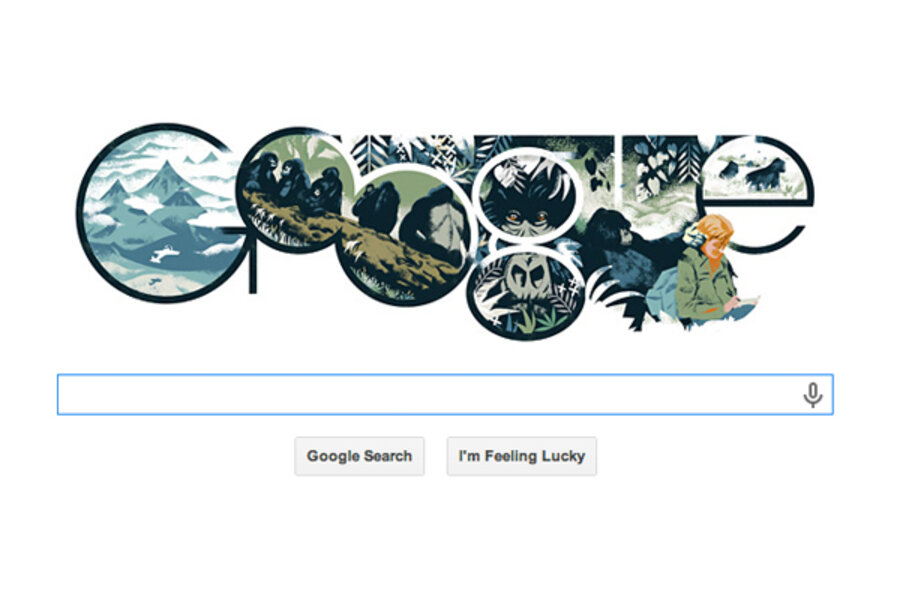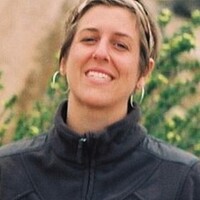Why was Dian Fossey killed?
Loading...
Only a small crowd of muddy-footed acquaintances, several porters, an American minister, and precious few friends, were able to climb up the mountainsides of Rwanda's Ruhengeri Province in time for the funeral of Dian Fossey.
They buried her alongside gorillas she had known and lost, over the course of 18 years spent observing the animals and fighting bare-knuckled against those who hunted them for their hands, skulls, and infants. On December 28, 1985, the 53-year-old had been found in her cabin, slain by a machete that she had once stripped off a poacher. Her murder remains unsolved.
As a young woman in Kentucky, Fossey worked as a therapist with disabled Appalachian children, who "are lost in this world of ours," she wrote. "All are much younger than their years and are like wild animals penned up with no hope of escape."
It was during that time when she began to dream of visiting Africa, and wrote, "The thought of being where the animals haven't all been driven into little corners attracts me so much." A half-decade later, after mortgaging three years of income to finance the trip, she flew to Kenya, drove to Tanzania, and introduced herself to the celebrated paleoanthropologist Louis Leakey, who would later send her to Rwanda to study gorillas, as he had sent Jane Goodall to study chimpanzees in Tanzania.
Fossey spent her years in Rwanda building trust with elusive, hunter-shy groups of gorillas. Yet the violent milieu in which those delicate bonds formed, seems to have hardened other parts of her; she developed a reputation of treating her admirers caustically and her enemies without mercy.
Fossey's own words, which express joy, admiration, grief, and fury with precision and humor, attest that she suffered no fools, and perhaps chronically undermined the worth of those around her.
"He does his work perfectly," she wrote of the cook she hired upon establishing her mountain center, "but he's so rude and insolent I hate having him here. At any rate, I told him he was on trial this month and I've tripled his workload and treat him like dirt. This is what I should have been doing all along, for he's finally toeing the mark and actually seems to respect me for the first time… So I go around giving orders and grumbling, but it makes me lonely–I've no one to talk to now that I've just about mastered Swahili."
And in a 1971 letter to her parents, she wrote, "Temper is not the best… Now the German and French Ambassadors want to come before I leave and I had to decline and ask them not to – bad diplomacy but unavoidable."
After years of letting her temper flare, some foes said her death came as no surprise. "She mistreated everyone around her and finally was done in," Fossey's former research associate Bill Webber told Harold Hayes, one of Fossey's biographers.
According to Hayes, Fossey tortured her enemies, kidnapped their children, and killed their cattle, along with many lesser humiliations. Her letters confirm much of the rap sheet: Fossey writes of subjecting a captured poacher to a "nettle lashing routine" and describes how she retaliated against the abduction of an infant gorilla, by luring away a small child of the Watusi tribesman who was responsible.
That tit-for-tat, though appalling to some, led to the quick return of both innocents, and in its aftermath Fossey appears to have developed a mutually respectful understanding with that tribesman. Moreover, the renowned chimp primatologist Jane Goodall writes that "if Dian hadn't done what she had, there would be no gorillas left in Rwanda to study."
Fossey's death is often attributed to poachers, and in 1978, after three nearby gorillas had been killed, Fossey wrote in a letter to her uncle, "The poachers want me out of here very, very badly, and I have been told that I am next on their list."
But the author Farley Mowat, who wrote her story, doubts that her death seven years later came at the hands of poachers.
"If one of them had really sought her death, he would have attempted to have her poisoned or, if absolutely desperate, would have killed her when she was in his domain–in the forest–where an arrow, a gunshot, or a spear-thrust could have ended her life with small risk to him," he writes.
The comment of Fossey's assistant that "she mistreated everyone" suggests a theory that her personality got her killed – perhaps by someone who had been wounded or angered past all reason – and the Rwandan government's investigation seems to echo this notion.
After interrogating all of Fossey's staffers, local authorities charged her former tracker and one of her student research assistants – the first of whom she had fired months earlier, and the second whom she had ridiculed constantly in letters – with her murder. The student, Wayne McGuire, escaped the charges by fleeing to the US, and the tracker, Emmanuel Rwelekona, was later found hanged in his prison cell.
But many reports at the time express doubt at the official verdict of suicide, and others have attributed Fossey's death to those higher up.
In 2001 Rwandan authorities said that Protais Zigiranyirazo, or "Monsieur Zed," who had been the governor of Ruhengeri Province during Fossey's time there, had ordered her death, according to The Guardian. Monsieur Zed spent eight years on trial for war crimes committed during the 1994 Rwandan genocide, of which he was acquitted, but he was never charged in her murder.
Nicholas Gordon, an investigative journalist who wrote a book about Fossey's death after traveling to Rwanda in the 1990s, came to a similar conclusion: Fossey had been killed because she knew too much about illegal animal trafficking among Rwanda's ruling elite, and for her efforts to restrict gorilla-related tourism.
Fossey does, in fact, describe gathering a wealth of poaching information from a frightened poacher she had captured, and writes, "There are names on the list that could mean big trouble if released."
During her time, Fossey herself was widely charged with the scientific crime of "anthropomorphizing," or attributing human traits to the animals she observed. In fact, her generation of primatologists began to change the way empathy is viewed in the sciences.
Renowned primatologist Jane Goodall argued for allowing "anthropomorphic interpretations of complex behavior to serve as a baseline for rigorous questioning." And Mowat, Fossey's biographer who also wrote the classic memoir "Never Cry Wolf" after several solitary years observing Arctic wolves, says, "I'm entirely, 100 percent in favor of that." He adds, "The only ability I have in understanding animals, is to recognize the fact that I am one of them. We're all in it together."
Fossey's sense of more-than-human kinship seems to have both sustained her during 18 often lonely, adversarial years, and made her work all the more painful.
When, in 1978, she learned of the murder of a gorilla whom she had observed since his childhood, she wrote, "There are times when one cannot accept facts for fear of shattering one's being… All of Digit's life since my first meeting him with him as a playful little ball of black fluff ten years earlier, poured through my mind. From that dreadful moment on, I came to live within an insulated part of myself."
[Editor's note: This story has been updated with expanded material since it was originally published.]








